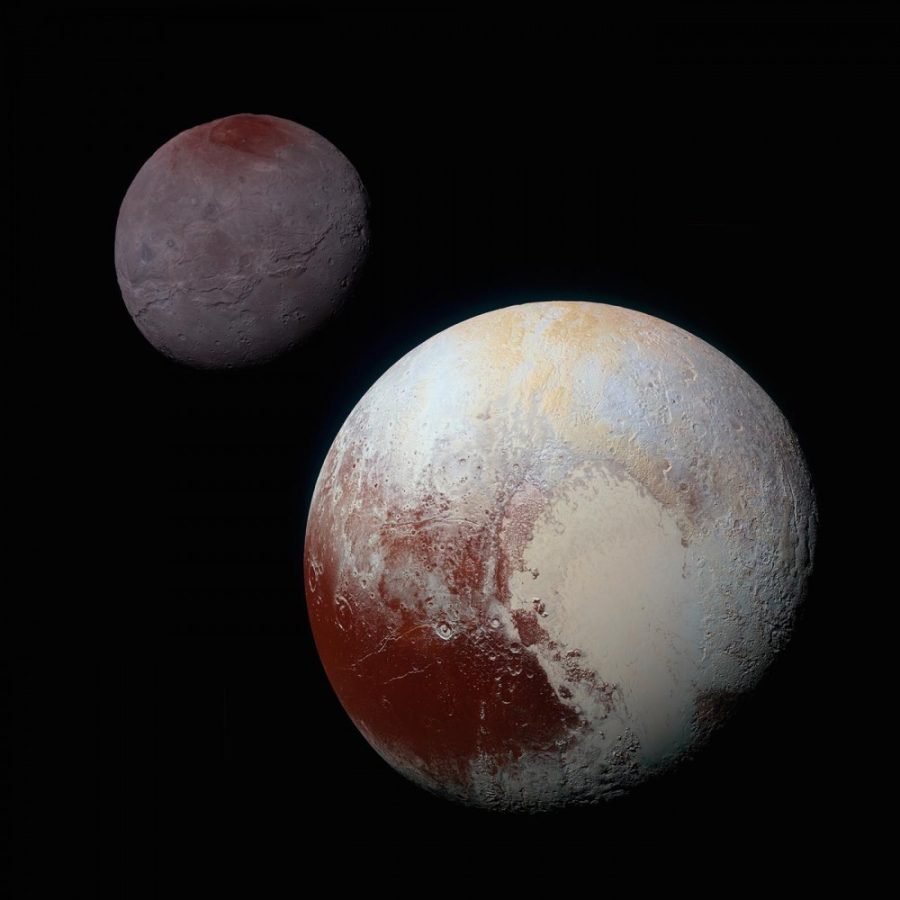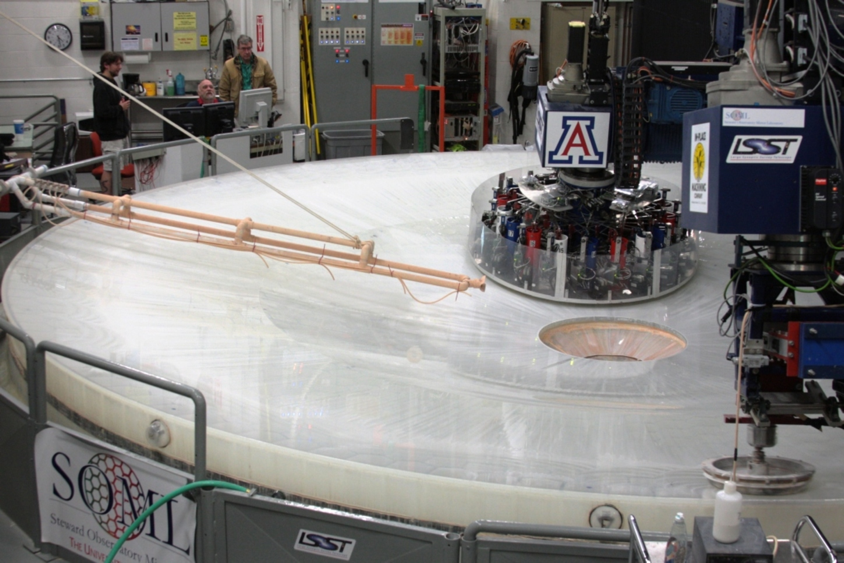A research team from UA’s Lunar and Planetary Laboratory have drawn several conclusions about Pluto’s “heart” in the Nov. 17 issue of Nature. The team is comprised of planetary sciences graduate student James Keane and assistant professor at the LPL, Isamu Matsuyama.
Keane and Matsuyama are part of a generation of Pluto researchers that were able to witness first-hand the success of New Horizons, a space probe launched in January 2006 toward the far reaches of the solar system.
RELATED: UA research finds evidence supporting the existence of a ninth planet beyond Neptune
“Before New Horizons really got to Pluto, I considered myself a Pluto skeptic,” Keane said. “Others were looking at Pluto through telescopes, and while they couldn’t resolve the surface, there was evidence that Pluto was changing with time. But no one really knew what it would look like when we got there.”
When the probe did get there, the distant and seemingly stagnant dwarf planet looked and behaved much differently than what was expected, according to the findings.
Radioactive decay in the dwarf planet’s mantle has kept Pluto geologically active while some of its companions, like Mars, have lost all of their heat.
Recently, Keane has been mapping cracks in Pluto’s surface. Based on their location, the research team was able to infer that Pluto had been gaining mass in a particular area. This supports observations made of a realignment in Pluto’s spin axis, known in astronomy as true polar wander.
This research confirms what once was thought of as a primarily dormant planet is actually a continually changing world, doing so in dramatic fashion—and it may offer an explanation for that elusive heart shape as well.
New Horizons passed by Pluto in the summer of 2015. As images were released, one landmark caused mass intrigue even outside of the scientific community—the massive heart shape on Pluto’s surface. While some argue that it bears a closer resemblance to Charles Shulz’s “Snoopy,” the question remains: how did it get there? Known to astronomers as Sputnik Planitia, Pluto’s heart has been the subject of recent debate.
“The New Horizons mission was able to get some topographical data, and Sputnik Planitia turned out to be a basin that is roughly circular,” Keane said. “And the easiest way to make a big hole in the ground on planetary scales is to be impacted by a large asteroid or comet.”
It is important to remember these processes occur over million-year timescales. So why are we seeing this reorientation now?
“We think that we found evidence that it’s changing its spin with time and there are a couple ideas on why that’s happening,” Keane said. “The one we focus on in our research is this idea that Pluto’s ices are getting trapped in this one particular special spot on Pluto, Sputnik Planitia.”
One year on Pluto is roughly 248 years on Earth, giving it long and drastic seasons.
“Pluto’s spin axis is tipped 108 degrees,” Keane said. “The earth is tipped 23 degrees with respect to its orbit. This is what gives us our seasons. Pluto is tilted past 90 degrees so it’s basically on its side. That can give very dramatic seasons,”
Keane and his fellow researchers offer prime examples of how New Horizons will have implications and adaptations for a long time to come.
“New Horizons was actually the first time we were able to measure the surface pressure in detail,” Keane said. “We are still not actually sure what Pluto is going to do. … Although, there are predictions and ways that we can monitor, even as New Horizons is long gone.”
RELATED: UA-run HiRISE telescope snaps photographs of crashed Mars lander
Although there are many mysteries still to solve in regards to Pluto, Keane doesn’t think we will send another probe to revisit Pluto in the future.
New Horizons was a brief flyby, and even that was a nearly impossible feat.
It was launched by an Atlas V rocket, the fastest and most state-of-the-art rocket available. Even then, New Horizons, which is roughly the size of a baby grand piano, took 10 years to get a look at Pluto, and then only had sight of the surface for a few minutes.
As of now, entering Pluto’s orbit is simply not an option.
“If you want to get there in a timely fashion, you need to be going fast and if you’re going fast you need to bring enough fuel to slow down, you would basically need the equivalent of another giant rocket,” Keane said. “There are a lot of higher priorities—other worlds we need to visit before we go back to Pluto.”
Follow Chandler Donald on Twitter.









